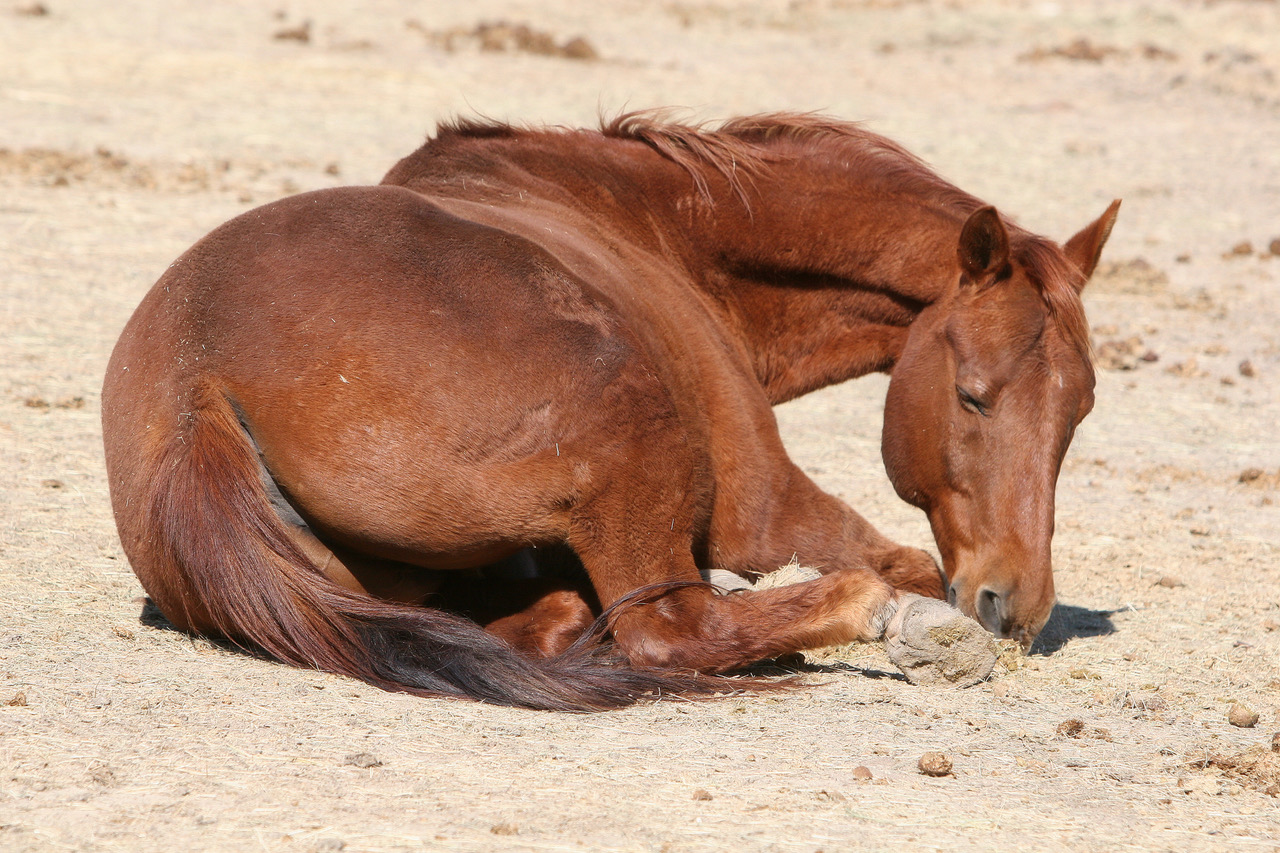By Dr. Lydia F. Gray, posted September 2022
In simplest terms, the word “laminitis” combines the words “lamina” and “itis” and therefore literally means inflammation of the lamina. The lamina are tiny Velcro-like tissue in horse hooves that attach the inner bone to the outer hoof wall. Sometimes laminitis is called “founder”, which is a very old term relating to boats -- meaning to fall or sink down -- but this is used for severe cases where the coffin bone sinks and may come through the sole of the hoof.

For many years, it was thought that laminitis was a result of damage to the lamina from inflammation. Inflammation is the body’s local response to an injury or infection and has five key components: heat, swelling, redness, pain, and loss of function. A sprained ankle in a person is a good example of inflammation. Given that the hoof wall is made of a hard substance that cannot swell or change color, the signs of inflammation in the horse’s feet are not as simple to detect as in a person.
Clinical signs of laminitis include:
shifting weight from one front foot to the other
painful-looking gait (often described as "walking on eggshells")
classic founder stance (leaning back so hind feet bear more weight i.e. "sawhorse stance")
warm feet, bounding digital pulses
sweating, high heart rate, high respiratory rate
reluctance to move or get up from lying down
Veterinarians and research scientists have recently learned that there’s more than one kind of laminitis, and that inflammation is not always part of the equation. Read the second article in the Laminitis series: “Laminitis Has More Than One Cause” and learn how and why horses and ponies develop this condition.
